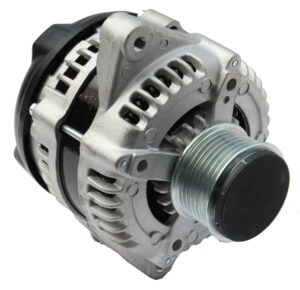FAQ
 On the side of the tire you’ll find the size, make, and model of the tire, along with its maximum inflation and load, speed rating, and safety warnings. Sizing on today’s vehicles usually looks like this: P235/75R15 105S (cars) or LT235/75R15 104/101Q (trucks).TireDimensions
On the side of the tire you’ll find the size, make, and model of the tire, along with its maximum inflation and load, speed rating, and safety warnings. Sizing on today’s vehicles usually looks like this: P235/75R15 105S (cars) or LT235/75R15 104/101Q (trucks).TireDimensions
The “P” means that the tire is designed for a Passenger car, “LT” for Light Trucks. If you choose to use a P rated tire on a vehicle that originally took an LT, the maximum load carrying capacity of the tire should be reduced by 9%.
The “235” is called the section width and is defined as the width of the tire in millimeters from sidewall to sidewall when the tire is fitted onto a rim of the recommended width. The width of the tread is slightly less than the section width. The “75” is the aspect ratio, which specifies that the height of a tire’s sidewall is 75 percent of its section width.
 The “R” specifies that the tire is a radial tire. Most of today’s tires are radials, but occasionally you may see a “D” or a “B” on the tire indicating that the tire is a bias ply tire.
The “R” specifies that the tire is a radial tire. Most of today’s tires are radials, but occasionally you may see a “D” or a “B” on the tire indicating that the tire is a bias ply tire.
Never mix radial and bias ply tires on a vehicle. The “15” is the diameter of the wheel in inches. The “105” or “104/101” indicates the tire’s load index as established by the Rubber Manufacturers Association.TireSidewall
Make sure that the tire you replace has the same carrying capacity as the one you are taking off. You can do this by using a tire with the same load index, or by checking the maximum load capacity of the tire which is printed in fairly small print near the wheel. On trucks you often won’t see this designation in which case you should look for a load range such as C, D, E, or F.
The “S” or “Q” is the speed rating of the tire, which indicates the tire’s maximum speed. Some common speed ratings are: Q = 99 MPH; S = 112 MPH; T = 118 MPH; U = 124 MPH; V = 149 MPH; and Z for tires that won’t fall apart over 149 MPH. The speed rating is placed just before the “R” on some older tires. You can also consider this rating as a “performance rating” as tires with high speed ratings are built to withstand higher lateral and g-forces, resulting in improved handling even at slow speeds. If you want to improve handling, upgrade the speed rating.
Unfortunately, this rating system is limited as a comparative tool because the tire manufacturers perform the tests without much oversight from the government. The ratings can be useful to compare tires made by the same manufacturer, but are less useful when comparing one brand to another. Furthermore, there are virtually no “AA” or “C” rated traction tires, so most of the tires are “A” with a few “B” rated tires near the low end.
 The correct tire typically depends on the primary use of the vehicle, how it is driven, future plans for the vehicle, the weather, and any special traction requirements.
The correct tire typically depends on the primary use of the vehicle, how it is driven, future plans for the vehicle, the weather, and any special traction requirements.
Tire Construction
The use of various configurations of grooves and sipes in a tire tread affects the tire’s noise pattern and traction characteristics. Typically, wide, straight grooves have a low noise level and good water evacuation properties. Circumferential and lateral grooves work in concert to enhance the tire’s overall performance.
Directionally, the more lateral grooves on a tire, the better the traction. Sipes are small grooves that cross larger tread elements. The more siping a tire has, the better its traction, especially in snow or mud.
Check the pressure when tires are cold; that is, when the vehicle has been parked for at least three hours. If necessary, add air to inflate the tires to the pressure specified on the vehicle placard. Since this reading will be most accurate with cold tires, drive to the nearest source of pressurized air whenever possible. Never “bleed” or reduce the inflation pressure when the tires are hot. When tires heat up from driving, it is normal for inflation pressures to increase above recommended cold inflation pressure levels. If you let air out of a hot tire, it will be under inflated when it cools down. Also, use a high quality air pressure gauge to check the tires. Don’t trust your eyes! You can’t tell by looking at a tire if it is properly inflated.
To achieve more uniform wear for all tires on the vehicle, tires should be rotated every 7,500 miles or at any sign of uneven wear. If tires show uneven wear, a qualified service technician should check and correct any misalignment, imbalance, or other mechanical problems. The standard rotation pattern for most vehicles is to move the rear tires straight to the front and move the fronts to the rear while crossing them to the other side of the vehicle.
We recommend that you rotate tires in the manner suggested by the vehicle’s owner’s manual.
A vehicle’s wheel alignment determines whether the vehicle will track straight down the road. If the vehicle is out of alignment, it will cause the vehicle’s tires to wear prematurely or such that they may create a lot of noise.
The average tire today lasts around 43,000 miles, but like anything else, you get what you pay for. Many are capable of much longer mileage with tread wear warranties at 80,000 miles or higher. Others, such as performance tires, are designed to maximize their cornering and handling capabilities at the expense of tread life and may wear out as quickly as 20,000 miles.
Other factors–such as how someone drives (easy or hard), where they live (flat or hilly), and road surface (concrete vs. asphalt)–will also affect the longevity of the tires.
If you can’t find these tread bar indicators, you can use the penny test. Insert a penny into the tread of the tire with Lincoln’s head facing down. If you can see the top of his head, then the tires need replacing. However, you may experience a loss of traction well before the tire is completely worn out.
We do not recommend plug repairs; they are dangerous and may void the manufacturer’s warranty. We also do not recommend use of an inner tube for the repair of a damaged tire.
A damaged tire is not repairable and should be replaced if:
- It has been punctured by an object in excess of ¼”.
- The tire has a bubble in the sidewall. This is called an impact break and typically occurs when the tire has hit a pothole or other object, pinching the sidewall between the rim and the object, causing damage to the tire carcass. Air pressure in the tire exposes this weakness, causing a bubble where the structural damage has occurred.
- The tire displays a wear ring around the circumference of the sidewall. This sidewall abrasion is typically the result of driving on the tire while it is under inflated or flat.
- The tire has damage to the inner liner. This may include, but is not limited to under inflation wrinkles, rubber fragments, tire dust, or detachment of the inner liner.
- The tire has any bead damage, large punctures, slices, or cuts, or is damaged in any other way which might compromise its structural integrity.
Sometimes a foreign object impacts a tire and causes a slow loss of air pressure which cannot always be detected by the driver. A tire driven while low on pressure loses its ability to dissipate heat. This heat can cause a thermal breakdown of the tire on a molecular level, resulting in a blowout. Under these circumstances it is often impossible to determine the actual cause of pressure loss.
A tire can also blow out due to an impact it received sometime in the past. An impact break can happen when a tire impacts a pothole or rut in the road. This impact break can be small at first but grow over time and thus eventually cause a blowout. This is often noticeable as a slight bulge in the sidewall of the tire.
Therefore, effectively manage such systems as anti-lock braking systems, traction control, fuel management systems, electronically controlled automatic transmission and electronic handling stability systems. Changing tire diameters sends erroneous readings to the computers. These systems won’t fail, but they will be impacted to varying degrees.
An all-terrain type tire is a light truck tire that has been designed with an even more aggressive tread pattern. This type of tire may be driven on or off the road in virtually any type of weather and road condition. In rain and on mud, an all-terrain tire’s open, self-cleaning tread provides excellent traction, and its rugged edges grip on rocky and uneven terrain.
 Plus sizing is one of the easiest ways to achieve enhanced performance and change the appearance of a vehicle Converting to a “plus 1″ size means increasing the wheel diameter by 1” and selecting an appropriate tire to fit. Likewise, moving to a “plus 2″ would result in a wheel with 2” larger diameter.
Plus sizing is one of the easiest ways to achieve enhanced performance and change the appearance of a vehicle Converting to a “plus 1″ size means increasing the wheel diameter by 1” and selecting an appropriate tire to fit. Likewise, moving to a “plus 2″ would result in a wheel with 2” larger diameter.
Note, however, that while the wheel diameter is increasing, the overall diameter of the tire remains fairly consistent (usually within +/- .04 inches) preserving the speedometer reading and gear ratio.
When “plus sizing,” the tire is wider (section width) and therefore has a larger footprint. In addition, the sidewall becomes shorter (aspect ratio) and more rigid. Together, this gives better lateral stability and increased steering response.
Symptoms of wear include uneven wear on your tire treads. If your vehicle’s front end dips excessively during sudden stops, they may also need to be replaced. You can check them by pushing down on the front and rear of the vehicle and checking for excessive bouncing.

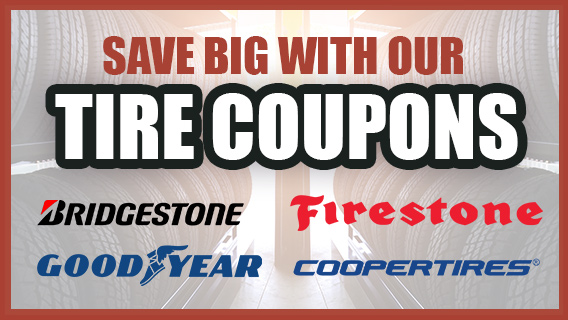



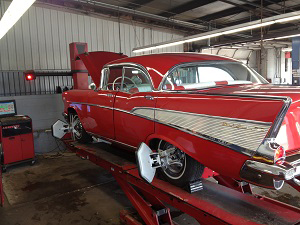 Wheel Alignment along with tire/wheel balancing will help your tires last much longer, but they are two different things. A wheel alignment may be needed if your vehicle is pulling to the left or right when the steering wheel is in the straight ahead position or if your tires are wearing unevenly.
Wheel Alignment along with tire/wheel balancing will help your tires last much longer, but they are two different things. A wheel alignment may be needed if your vehicle is pulling to the left or right when the steering wheel is in the straight ahead position or if your tires are wearing unevenly.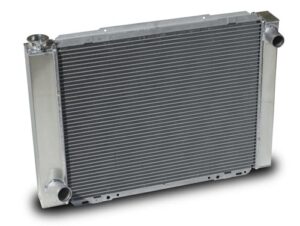 Coolant, also known as antifreeze is found in your vehicle’s radiator. The coolant serves a few purposes, the most important is keeping water in your radiator and engine from freezing in cold temperatures and from boiling over in the summer from the hot weather. Radiators are normally filled with a 50/50 mixture of antifreeze and water. Another function of the coolant is lubrication of the moving parts it comes in contact with, like the water pump.
Coolant, also known as antifreeze is found in your vehicle’s radiator. The coolant serves a few purposes, the most important is keeping water in your radiator and engine from freezing in cold temperatures and from boiling over in the summer from the hot weather. Radiators are normally filled with a 50/50 mixture of antifreeze and water. Another function of the coolant is lubrication of the moving parts it comes in contact with, like the water pump.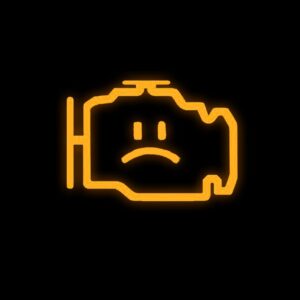 Our Master Certified Technicians can perform a computerized engine analysis on your vehicle to keep your vehicles engine operating perfectly. Today’s vehicle engine operates completely different than days gone by. Your engine is a highly sophisticated piece of equipment and present day regulations demand that vehicles be equipped with electronic engine control systems that help curb carbon emissions and increase fuel efficiency.
Our Master Certified Technicians can perform a computerized engine analysis on your vehicle to keep your vehicles engine operating perfectly. Today’s vehicle engine operates completely different than days gone by. Your engine is a highly sophisticated piece of equipment and present day regulations demand that vehicles be equipped with electronic engine control systems that help curb carbon emissions and increase fuel efficiency.
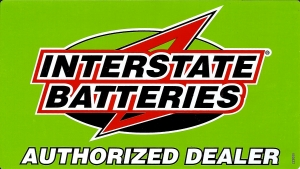
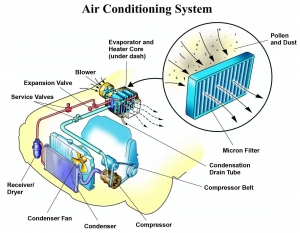 Your vehicle’s air conditioning system is responsible for many aspects of the cooling and heating system in your vehicle. You know that the air conditioning system cools your car in the summer, but it also plays an important role in the heating, defrosting, air filtering and humidity control, providing you with a clear view of the road.
Your vehicle’s air conditioning system is responsible for many aspects of the cooling and heating system in your vehicle. You know that the air conditioning system cools your car in the summer, but it also plays an important role in the heating, defrosting, air filtering and humidity control, providing you with a clear view of the road.